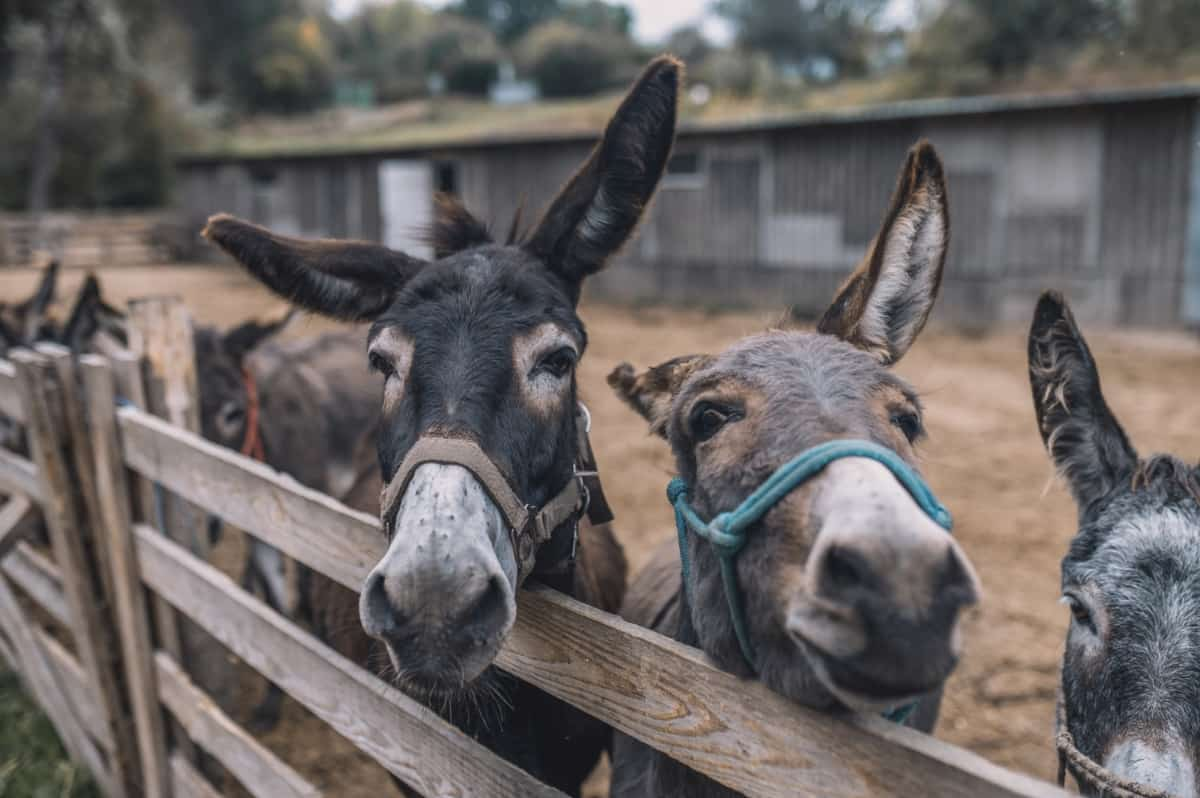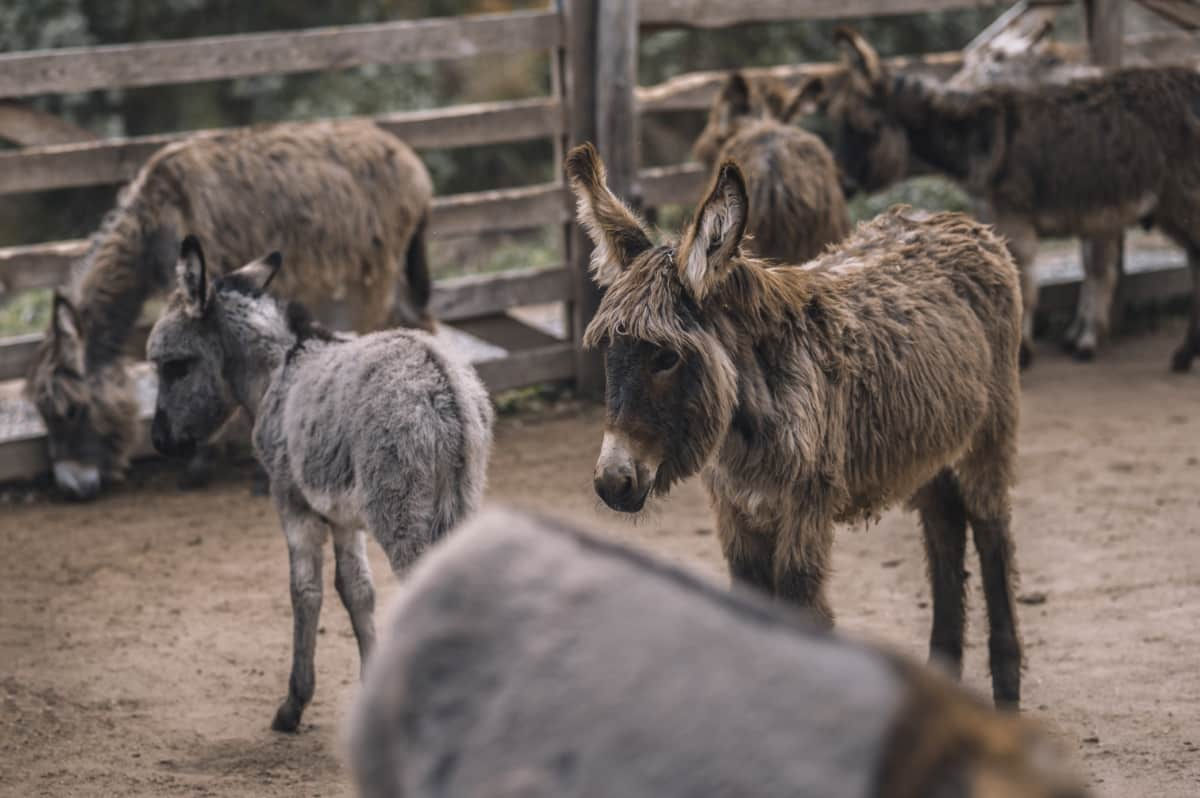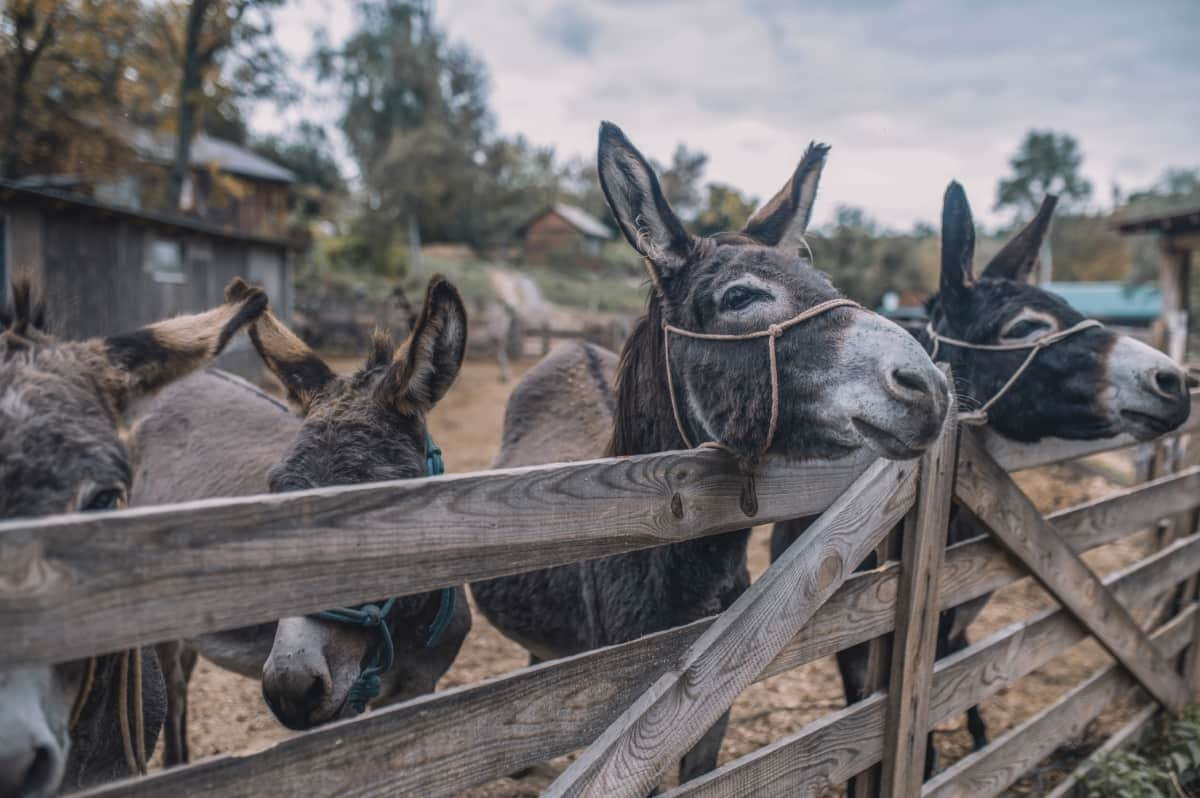Embarking on a donkey breeding business entails a meticulous blend of financial planning and market understanding. From initial investment in breeding stock to continuous management of feeding, care, and healthcare costs, every aspect demands careful consideration to ensure both the donkeys’ health and the venture’s profitability.

Donkey Breeding Cost and Profit
Calculating the Costs of Donkey Breeding: A Comprehensive Guide
Various factors, including the initial investment and ongoing expenses, influence donkey breeding costs and profit. Donkey farming starts with acquiring breeding stock, where the female donkey price plays a significant role. The cost of purchasing a female donkey varies based on breed, age, health, and pedigree.
In addition to the purchase price, initial costs include shelter, feeding, and healthcare. Ensuring the well-being of donkeys requires proper nutrition and veterinary attention, which are integral components of the overall expenses. Furthermore, there may be expenses related to training and labor.
Understanding the Financial Aspects of Donkey Breeding
To understand the financial aspects of donkey breeding, one must consider fixed and variable expenses. Fixed expenses include infrastructure costs such as barns and fencing. Variable expenses comprise feed, veterinary care, and breeding fees if using an external male donkey. The feed price can fluctuate based on market conditions, which affects the overall cost of maintaining the donkeys. Additionally, insurance costs for the animals and the facility might be considered to mitigate risks associated with donkey farming.
Evaluating the Economic Viability of Donkey Breeding Operations
Evaluating the economic viability of donkey breeding operations involves analyzing costs and potential revenue. The revenue from donkey breeding comes primarily from selling offspring. The demand for donkeys, which can vary based on region and usage, impacts the selling price. Other revenue sources may include offering donkeys for recreational purposes or renting them for specific tasks. Balancing these revenues against the costs incurred is crucial in assessing the profitability of donkey breeding ventures.
The Economics of Donkey Breeding: Cost Analysis and Revenue Projections
A detailed cost analysis and revenue projection are vital for understanding the economics of donkey breeding. Costs include initial investment, feed, healthcare, and maintenance, while revenue is primarily derived from the sale of donkeys. Seasonal factors can influence both costs and revenue. For instance, feed prices may be lower in harvest seasons, affecting overall expenses. Revenue projections should consider market trends and potential growth in demand for donkeys, which can impact the venture’s profitability.
In case you missed it: How to Start Donkey Farming in 10 Steps: Business Plan, Management, and Care

Long-Term Financial Planning for Donkey Breeding Ventures
Long-term financial planning for donkey breeding ventures requires a strategic approach. This involves setting aside funds for unexpected expenses such as emergency veterinary care or sudden feed price hikes. Investing in quality breeding stock can also impact long-term profitability, as healthier, well-bred donkeys typically command higher prices. Additionally, diversifying income streams, such as donkey-related services or products, can provide financial stability and reduce reliance on a single revenue source.
Estimating the Expenses and Potential Earnings in Donkey Breeding
A comprehensive budget should be prepared to estimate the expenses and potential earnings in donkey breeding. This budget must include all foreseeable expenses, from the initial purchase of breeding stock to daily maintenance costs. The potential earnings are estimated based on the current market value of donkeys, considering factors like breed, age, and purpose (e.g., work, breeding, or companionship). Regular market analysis is essential to stay updated on pricing trends and adjust the business strategy accordingly. Proper financial planning and market research ensure a profitable donkey breeding operation.
Financial Considerations for Successful Donkey Breeding Programs
Successful donkey breeding programs hinge on sound financial planning and management. This involves a thorough understanding of both capital investment and operational costs. Capital investment mainly involves purchasing top-quality breeding animals, and the expenses can fluctuate considerably depending on factors such as breed and health status. Operational costs encompass feed, healthcare, housing, and labor.
Effective budgeting for these costs is crucial. Additionally, setting aside contingency funds for unforeseen expenses, such as veterinary emergencies or feed price hikes, is essential. Understanding the market dynamics, including demand for different donkey breeds and their uses, helps in pricing the offspring appropriately, ensuring a balance between profitability and market competitiveness.
Maximizing Profits in Donkey Breeding: Strategies and Financial Insights
Maximizing profits in donkey breeding requires a combination of strategic breeding practices and astute financial management. Selective breeding can improve the quality of the offspring, thereby increasing their market value. Diversifying revenue streams, such as offering stud services or using donkeys for agritourism, can enhance profitability. Keeping operational costs in check, particularly feed and healthcare, is crucial.
In case you missed it: Frequently Asked Questions About Donkey Farming

Additionally, staying informed about market trends helps make timely pricing and sales decisions. Marketing strategies, such as building a brand for the farm and leveraging online platforms for wider reach, can also significantly impact profitability. Regular financial analysis and adjustments based on market feedback and operational performance are key to maximizing profits in donkey breeding.
Budgeting and Forecasting for Donkey Breeding Businesses
Budgeting and forecasting are crucial components of managing a donkey breeding business. A well-structured budget should encompass all the significant costs and potential revenues associated with the operation.
Donkey Breeding Costs
- Purchase or Lease of Breeding Stock: This initial investment is substantial, ranging from $500 to $5,000 or more per animal. The cost varies depending on the donkeys’ breed, age, and quality. When budgeting, consider the number of donkeys and their specific needs.
- Feeding and Care: Donkeys require a diet of hay, grass, and supplements, incurring monthly costs between $300 to $600. The number of donkeys and the regional feed price influence this cost.
- Veterinary Care: Regular health checks are essential, with yearly expenses ranging from $500 to $1,000. This includes routine checks and any special medical needs.
- Breeding and Foaling: The breeding process costs from $500 to $1,500 per cycle, including artificial insemination and other related expenses.
- Fencing and Shelter: Secure fencing and adequate shelter are essential, costing anywhere from $1,000 to $3,000, depending on the facility’s size and complexity.
Donkey Breeding Profits
- Sale of Breeding Stock: Breeding donkeys can be sold for $500 to $2,000 or more. Prices depend on the breed, age, and quality of the donkeys.
- Sale of Foals: Foals’ prices vary widely, ranging from $500 to $5,000, based on breed, age, and quality.
- Membership in Breed Associations: Joining associations such as the American Donkey and Mule Society costs between $50 to $200 annually, providing access to valuable resources for breeding management.
To effectively budget and forecast for a donkey breeding business, it’s important to
- Assess the initial capital needed for breeding stock and infrastructure setup.
- Estimate ongoing operational costs, including feed, veterinary care, and maintenance.
- Considering market trends and demand, project potential revenues from selling breeding stock and foals.
- Account for membership fees in breed associations, which can enhance the value of the breeding program.
- Consider creating a contingency fund for unforeseen expenses or market fluctuations.
- Frequently assess and modify the budget in accordance with real financial data, ensuring the stability and expansion of the business.
In case you missed it: From Waste to Wonder: 10 Best Benefits of Donkey Manure in Agriculture

Conclusion
The success of a donkey breeding business hinges on balanced budgeting and accurate forecasting, where careful management of costs and strategic sales decisions play pivotal roles.
- Feed Your Flock for Less: Top 10 Tips to Save on Chicken Feed
- Ultimate Guide to Ossabaw Island Hog: Breeding, Raising, Diet, and Care
- Hatching Answers: The Top 10 Reasons Your Chickens Aren’t Laying Eggs
- Eggs and Economics: Breaking Down the Cost of Raising Backyard Chickens
- Defend Your Greens: Proven Methods to Keep Iguanas Out of Your Garden
- Ultimate Guide to Cinnamon Queen Chicken: A Comprehensive Guide for Beginners
- Ultimate Guide to California Tan Chicken: Breeding, Raising, Diet, Egg-Production and Care
- Ultimate Guide to Marsh Daisy Chicken: Breeding, Raising, Diet, and Care
- 10 Types of Chicken Farming Businesses You Can Start for Profits